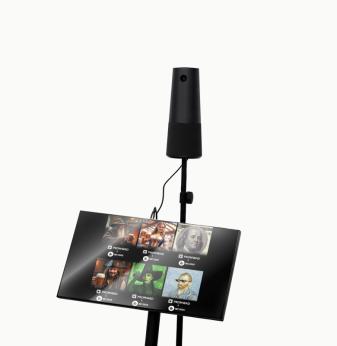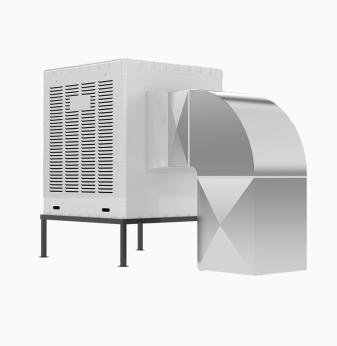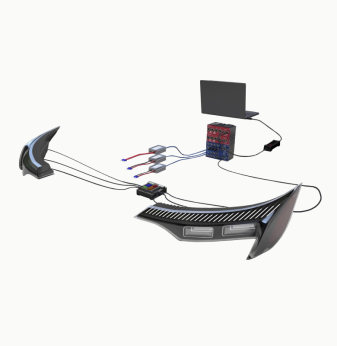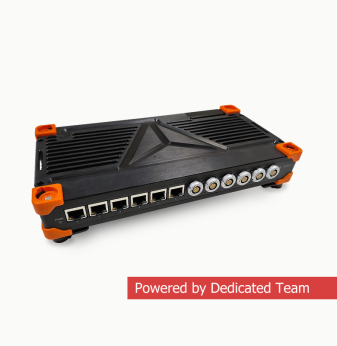Building Custom Protocol Gateways for Legacy Industrial Equipment

As factories and infrastructure systems undergo digital transformation, a major challenge remains: how to integrate legacy industrial equipment into modern networks, cloud platforms, and automation systems. These machines, often decades old, use outdated or proprietary communication protocols that don’t support IP-based or standard industrial fieldbus networks.
The solution? Custom protocol gateways — embedded systems designed to translate, route, and normalize data between old and new technologies.
In this article, we explore what these gateways do, how they are architected, and how Promwad helps clients bridge the gap between legacy machinery and modern IIoT ecosystems.
What is a protocol gateway?
A protocol gateway is a hardware or software device that allows two or more systems using different communication protocols to exchange data in real time. It acts as a translator and router between:
- Legacy serial-based protocols (e.g., RS-232/485, Modbus RTU, CANopen)
- Proprietary machine interfaces
- Modern industrial protocols (e.g., OPC UA, MQTT, EtherNet/IP, Modbus TCP)
- SCADA systems, cloud platforms, or REST APIs
In industrial settings, gateways enable brownfield equipment to become part of modern control, monitoring, or predictive maintenance systems—without requiring full hardware replacement.
Common use cases
- Connecting CNC machines to cloud dashboards
Legacy machines output serial data via RS-232. A custom gateway can parse it, convert to MQTT or OPC UA, and forward it to a factory data server. - Integrating Modbus RTU devices into a BACnet/IP building automation system
- Bridging proprietary PLC protocols with industrial Ethernet or TSN
- Migrating legacy substations or energy meters to IEC 61850 or DNP3 networks
- Data normalization for AI/ML analytics
Gateways can pre-process and normalize diverse field data for cloud or edge-based inference.

Core architecture of a custom protocol gateway
While the exact design depends on the project, most gateways share a layered architecture:
1. Hardware layer
- MCU or SoC with multiple serial/Ethernet/fieldbus interfaces
- Industrial-grade IO: RS-232/485, CAN, USB, digital IO
- Isolation circuits (galvanic isolation for serial ports or power domains)
- Optional FPGA for high-speed or deterministic tasks
- Optional secure elements for encryption and authentication
2. Protocol handling layer
- Parsers for legacy protocols: Modbus RTU, IEC 60870-5-101/103, Profibus, etc.
- Modern protocol stacks: OPC UA, MQTT, JSON/REST, BACnet, PROFINET
- Buffering and reassembly for fragmented or irregular transmissions
3. Conversion and routing logic
- Message mapping and transformation rules
- Data normalization (unit scaling, tag naming, timestamp insertion)
- Filtering, aggregation, or priority management
4. Application layer
- Local dashboard or web UI (optional)
- Device configuration, diagnostics, and OTA update mechanisms
Key engineering considerations
Developing protocol gateways involves numerous hardware and firmware design trade-offs:
Interface reliability
Industrial environments demand robust signal integrity, ESD protection, and fault tolerance.
Protocols like RS-485 require termination resistors and careful impedance matching.
Real-time behavior
For time-sensitive systems (e.g., motor control or protection relays), latency and determinism are critical.
RTOS or bare-metal implementations may be required for microsecond-level response times.
Security
Gateways often operate between trusted and untrusted domains.
Implement secure boot, encrypted communication (TLS), role-based access control, and OTA signing.
Maintainability
Protocols evolve, and gateway firmware must be updateable in the field.
Configurable mapping rules via JSON/XML or user-friendly interfaces improve long-term usability.
Design examples
Bridging serial and control I/O over long-distance fibre
Some “legacy” signals aren’t industrial fieldbuses at all — they’re RS-232/RS-485 serial commands and simple GPI contact closures that still must travel reliably across long distances. In our firmware for serial and GPI fiber-optic interfaces project, we built FPGA firmware that packetizes control data for optical transport and maps it back to low-speed serial/GPIO on the other end, enabling deterministic, low-latency control distribution over fibre. It’s the same gateway principle — translating between old interfaces and modern transport — applied to harsh, long-haul environments where uptime and timing matter.
Promwad’s custom protocol gateway for power quality monitoring
In one project, Promwad designed an embedded gateway that connected legacy power meters with RS-485 output to a cloud analytics platform using MQTT over TLS.
Our solution included:
- STM32-based industrial hardware with RS-485, Ethernet, and isolated power
- FreeRTOS + LwIP stack with secure MQTT client
- Modbus RTU master for polling meters
- Real-time buffer with timestamping and retransmission logic
- Secure OTA update system
The gateway enabled seamless integration of low-cost legacy meters into an advanced energy analytics dashboard — with full encryption and real-time responsiveness.
How Promwad helps clients modernize with protocol gateways
We offer:
- Hardware design for industrial-grade embedded systems
- Firmware development with support for legacy and modern protocols
- Driver development for serial, fieldbus, and Ethernet stacks
- Integration with SCADA, cloud, or edge platforms (AWS IoT, Azure IoT Hub, etc.)
- Long-term support for firmware maintenance and OTA update strategies
- Enclosure design, IP protection, and certification assistance
Our experience covers smart grid, factory automation, transportation, and energy systems — where legacy and next-gen systems must coexist.
Conclusion
Custom protocol gateways are essential tools in any modernization strategy for industrial equipment. By bridging old and new protocols, they unlock data, extend the life of critical infrastructure, and enable next-generation analytics, control, and remote management.
If you're looking to connect legacy devices to your modern automation or IIoT stack, Promwad can help you design a robust, secure, and scalable gateway solution tailored to your technical and business goals.
Our Case Studies












